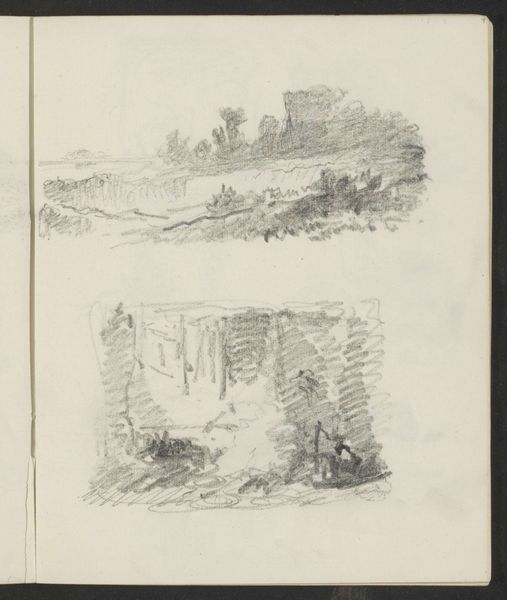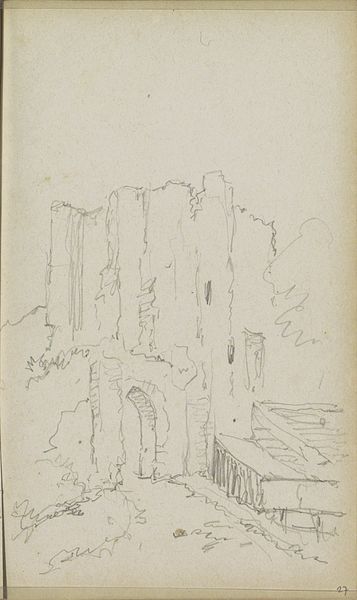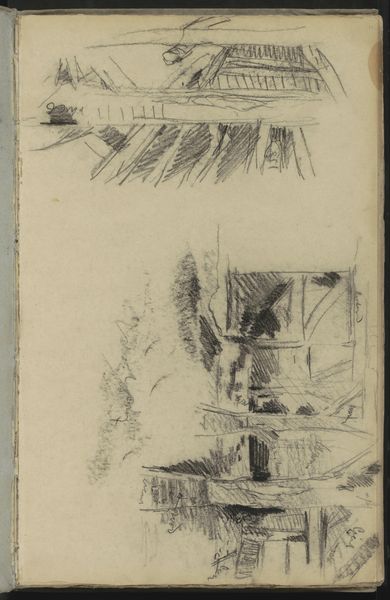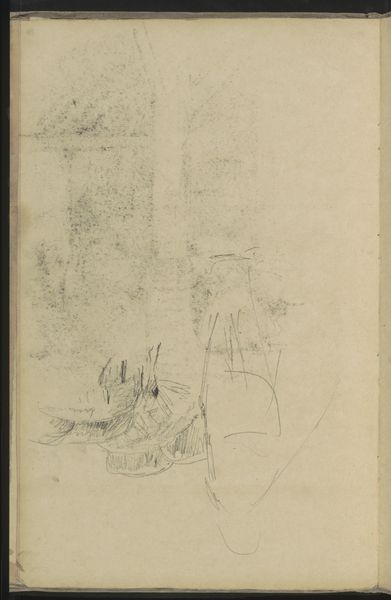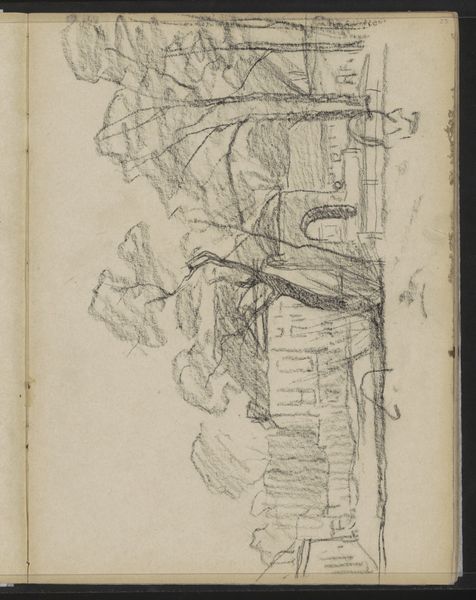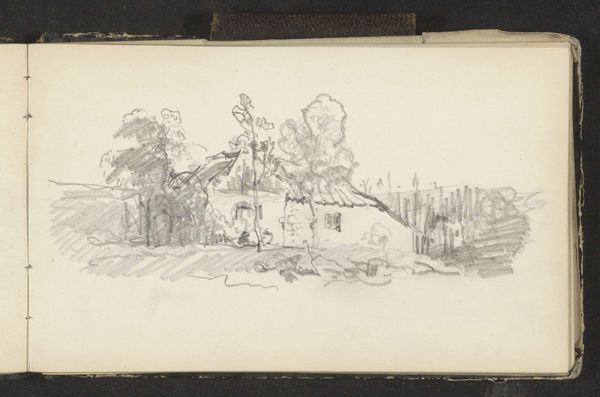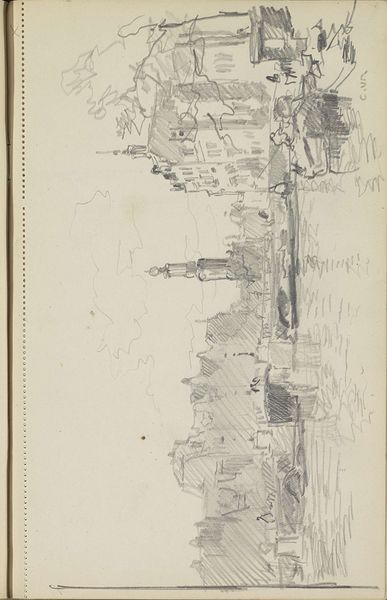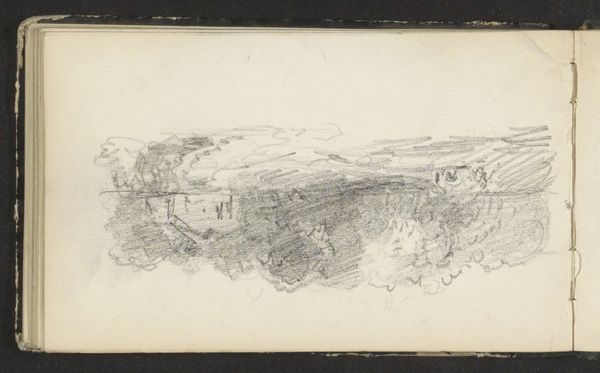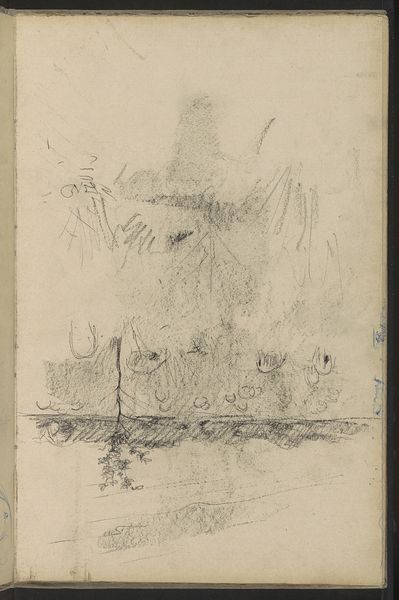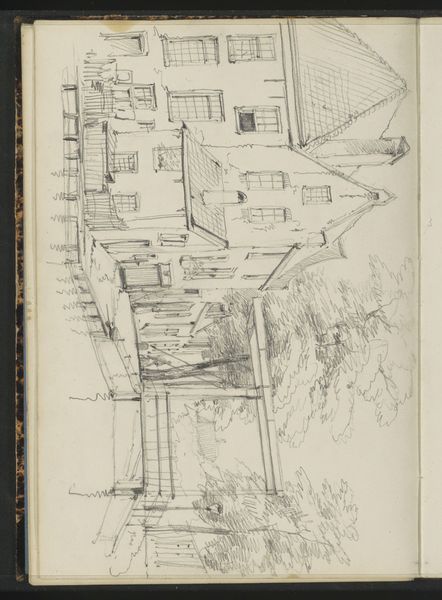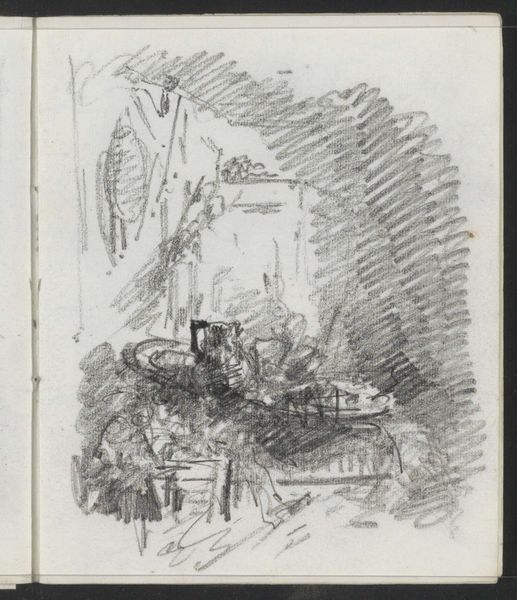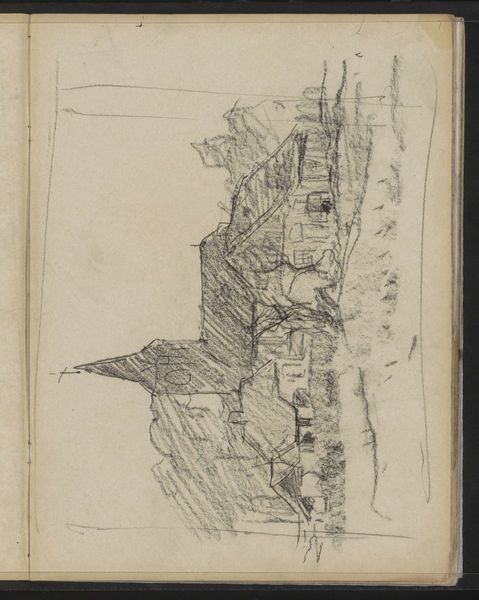
drawing, paper, ink
#
drawing
#
dutch-golden-age
#
impressionism
#
sketch book
#
landscape
#
paper
#
ink
#
sketch
#
sketchbook drawing
Copyright: Rijks Museum: Open Domain
Curator: We're looking at Willem Witsen's "Knotwilgen tussen boerderijen," a drawing made with ink on paper, dating from around 1884 to 1887. It resides here at the Rijksmuseum. Editor: It’s a fleeting image, almost ghostly. The sparse lines make the scene feel so immediate, like a captured memory of a windswept Dutch landscape. It's mostly a muted composition in greyscale, with some buildings in the mid-ground, and the skeletal branches dominating the foreground. Curator: Witsen was part of a group of Dutch Impressionists who were deeply invested in portraying everyday life, particularly scenes from the countryside and cityscapes, rejecting the grand narratives and history painting that had previously dominated artistic discourse. This quick drawing likely served as a study. Editor: I see something melancholy in those gnarled willows. The way the ink bleeds and thins evokes the passing of time, perhaps even mortality. In many cultures, trees connect us to the world around us, but also provide safe havens for reflection. There is vulnerability on display. Curator: Indeed. The pollarded willows, so characteristic of the Dutch landscape, can be seen as a symbol of human intervention in nature. It illustrates a long history of resource management and shaping of the environment for economic purposes and the demands of agrarian communities in a very pragmatic Dutch manner. Editor: Even on a basic level, I see how they mirror those rustic farm buildings. It is almost like both are worn, sturdy remnants withstanding harsh conditions. Maybe it speaks to Dutch endurance? Curator: Possibly. Remember that Witsen was part of the art movement against strict traditions. The Hague School painters, of which Witsen was affiliated, often championed rural subjects to critique rapid urbanization and celebrate traditional values, albeit in a fairly conventional manner compared to what was happening in France, for instance. The turn of the century saw tremendous social change throughout Europe, yet also a yearning for nostalgia. Editor: Knowing that, this little sketch gains so much more weight. It transcends mere scenery and serves almost as a record, preserving the cultural consciousness of a time gone by. Curator: Agreed. It shows us how an image, however unassuming, can reveal complex connections between humans, nature, and society. Editor: It's amazing how much story is told here with so few strokes of ink. The history, but also those symbolic undercurrents are so easily seen.
Comments
No comments
Be the first to comment and join the conversation on the ultimate creative platform.

